1. Effects of ginseng root
- 1. Effects of ginseng root
- 2. Effects of ginseng leaves
- 3. Simple ways to use ginseng, good for health
- 3.1 Decoction of ginseng root
- 3.2 Soaked ginseng roots in wine
- 3.3 Polyscias fruticosa leaf tea
- 3.4 Polyscias fruticosa extract
- 3.5 Steaming with ginseng leaves
- 3.6 Applying Polyscias fruticosa leaves
According to Oriental medicine, ginseng root has a sweet, bitter taste and cool properties; after processing, it can have a warm property, with the effect of eliminating rheumatism, relieving pain, reducing swelling, dispersing blood stasis, protecting the liver, benefiting the gallbladder, detoxifying, nourishing blood and qi, and promoting lactation.
Panax ginseng root is often used to treat rheumatism, bone and joint pain, trauma, postpartum pain, blood stasis and swelling, hepatitis, jaundice, boils, insect bites, and for weak people who need to replenish blood and qi...
According to modern research, ginseng roots contain many vitamins similar to ginseng, vitamins B1, B2, B6, vitamin C, alkaloids, glucosides, flavonoids, tannins and many essential amino acids such as lysine, cysteine, methionine...
Studies have also shown that ginseng root decoction has the effect of increasing endurance, increasing the body's endurance, fighting stress, stimulating brain activity, enhancing memory, relieving anxiety, anti-oxidation, protecting the liver, stimulating immunity...
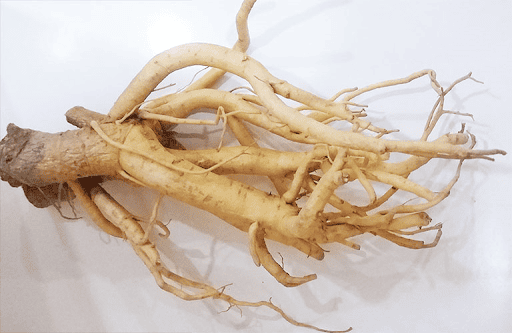
Polyscias fruticosa root contains antioxidants, protects the liver, stimulates immunity...
2. Effects of ginseng leaves
If in the past, Polyscias fruticosa leaves were often used as a side dish in dishes thanks to their sweet, rich flavor and characteristic aroma, today, especially thanks to the evidence of modern scientific research, Polyscias fruticosa leaves are becoming more and more popular with wonderful uses.
According to many oriental medicine documents, ginseng leaves have a bitter taste, have the effect of reducing swelling, relieving pain, promoting urination, detoxifying, and are often used in the form of fresh leaves, crushed, and applied to swelling, bruises, wounds, etc. Studies also show that ginseng leaves contain many saponins, flavonoids, polyphenols, alkaloids, glycosides, tannins, sterols, B vitamins, vitamin C, and some amino acids.
Thanks to these ingredients, Polyscias fruticosa leaves have many health benefits such as nourishing the body, supporting the treatment of Parkinson's and Alzheimer's, reducing bone and joint pain, regulating menstruation, treating blocked milk ducts, reducing bronchial asthma, supporting digestion, stabilizing blood sugar...
3. Simple ways to use ginseng, good for health
3.1 Decoction of ginseng root
How to make: Slice 10 - 20g of dried ginseng root, can be roasted and buried in the ground for a stronger flavor and more effects, boil to get water to drink once a day or divide into 2 times, drink for a few days to a few weeks.
Effect: Panax ginseng root is the main medicinal ingredient according to the pharmacopoeia. The root also has many active ingredients such as saponin and flavonoid, so Panax ginseng root milk has the effect of helping to replenish energy, strengthen the spleen, increase milk supply, reduce fatigue, and aid digestion.
3.2 Soaked ginseng roots in wine
How to make: Slice the roots or stems, dry them, roast them until golden brown, bury them in the ground, then soak them in white wine.
Effects: Similar to boiled ginseng root, ginseng root wine also helps replenish energy, strengthen the spleen, increase milk production, reduce fatigue, and aid digestion. In addition, ginseng wine can also be used for local massage to help relieve pain and reduce inflammation in cases of bone and joint pain.
3.3 Polyscias fruticosa leaf tea
How to use: Use 5 - 15g of dried leaves or a few fresh leaves, steep in boiling water for 5 - 10 minutes like tea; drink instead of soft drinks during the day.
Effects: With effective antioxidant and anti-inflammatory effects, ginseng leaf tea can help relieve colds, reduce fever, be a diuretic, and aid digestion.
3.4 Polyscias fruticosa extract
How to make: Boil the leaves or roots many times, concentrate to a paste form; store in the refrigerator for later use.
Effect: This is a convenient preparation for long-term use, used for nutritional purposes, anti-chronic inflammation, and supporting the treatment of rheumatism.
3.5 Steaming with ginseng leaves
How to make: Put a quantity of fresh leaves into a pot of boiling water, steam your face and body, can combine with some other herbs such as betel leaves, perilla, ginger, lemongrass...
Effect: Thanks to the volatile essential oils and warming effect, steaming with ginseng leaves can help relieve colds, headaches caused by wind and cold, clear the nose, and relax the mind.
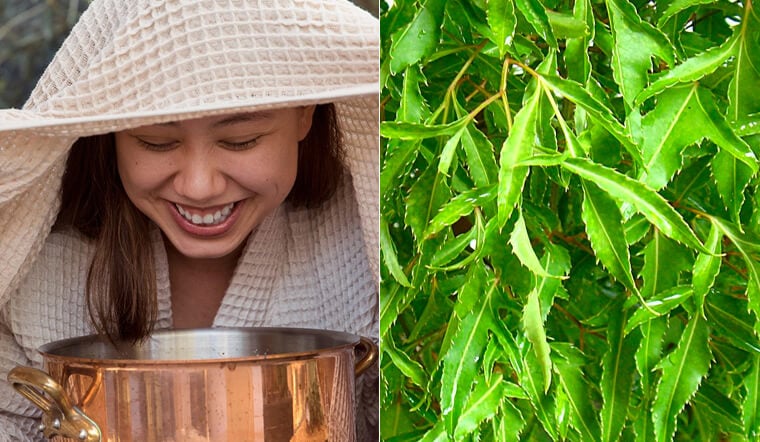
Steaming with ginseng leaves helps relieve colds, headaches...
3.6 Applying Polyscias fruticosa leaves
How to use: Wash fresh leaves, crush, add a little salt or warm water if desired, apply directly to swollen, bruised, or acne-prone areas, or fix with gauze for 15 - 60 minutes; repeat 1 - 2 times/day.
Effect: Polyscias fruticosa leaves have antibacterial and anti-inflammatory properties, promote wound healing, reduce swelling, relieve pain and have local antibacterial properties.
In addition, galangal leaves can also be combined with fish mint leaves and applied to the breast area, combined with warm compresses to help reduce swelling, relieve pain, and support milk duct clearance in cases of blocked milk ducts and breast engorgement after giving birth.
The roots and leaves of the ginseng plant have many health benefits, but when using them, you need to pay attention:
- Do not overdose because it can cause insomnia, nervousness, bloating, and nausea.
- People with yin deficiency and internal heat should be careful before using.
- Pregnant women should not use.
- Children should only use it externally or in very low doses...
Source: https://suckhoedoisong.vn/la-va-re-dinh-lang-co-tac-dung-gi-169251123161050192.htm


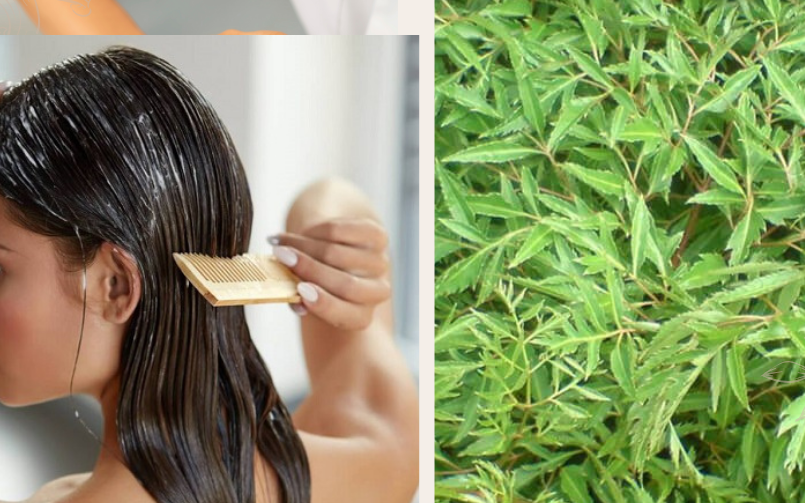












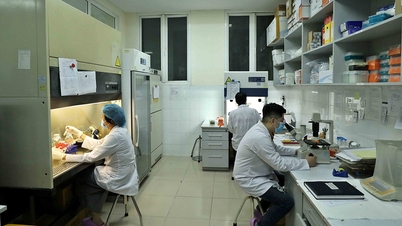
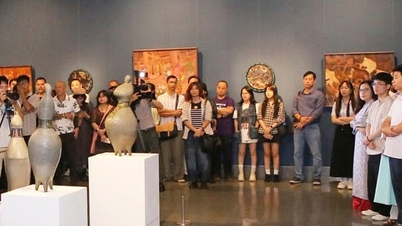














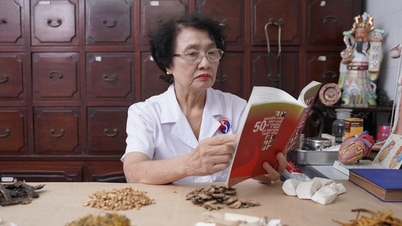




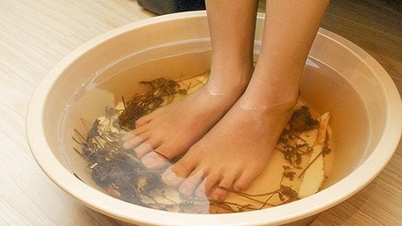




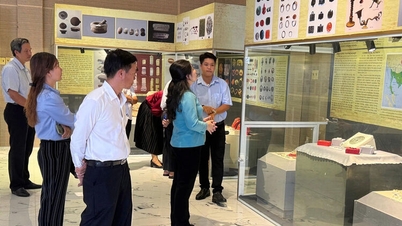







































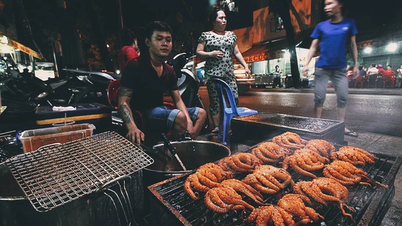



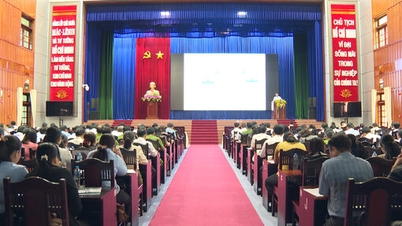

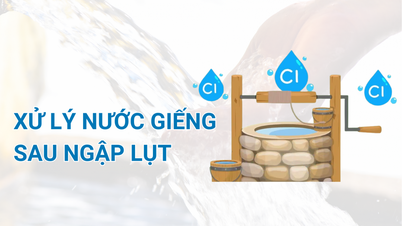







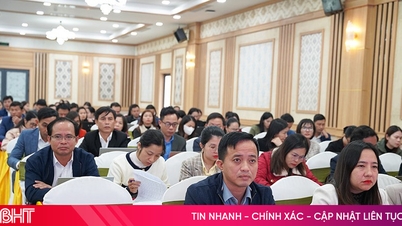
















Comment (0)